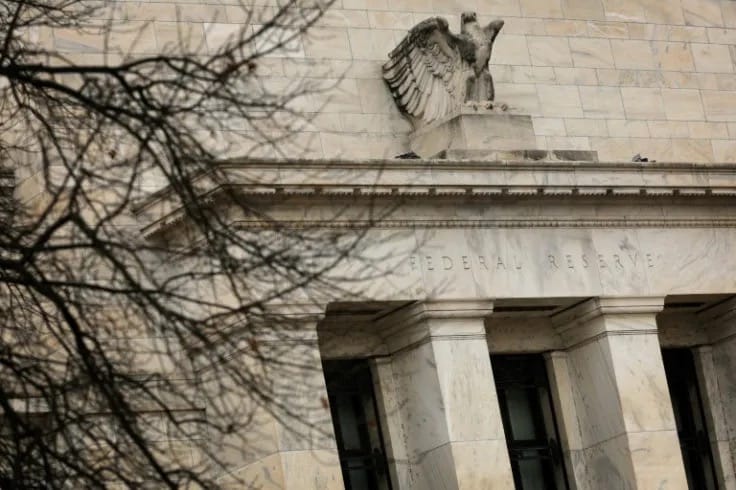Vijay Talks to IBTimes

Fed Meeting: Paving The Way For Interest Rate Cuts?
In its regular meeting this week, the Fed's headline news will not be what it does with interest rates but what it says regarding its policy targets.
The nation's central bank will maintain interest rates steady. It will leave the Federal Funds Rate (FFR) unchanged at the current 5.25%-5.50% level.
That's according to the CME's FedWatch Tool, which calculates the probability of changes in this critical monetary policy instrument. This time, it points to a 96.9% probability of FFR staying in the current range, slightly down from 97.9% a week ago and up from 83.5% a month ago.
Therefore, there will be no news to move markets here. Instead, the news will be what the Fed says about its stance in pursuing its dual mandate, price stability and maximum employment which will set the stage for the next interest rate move.
Wall Street analysts expect the nation's central bank to declare that its restrictive monetary policy has yielded the desired results. It has brought inflation very close to its policy target of 2%, justifying its neutral policy in the January meeting.
"The Federal Reserve will hold tight," Matt Willer, private asset investments expert, told International Business Times. "It wants one more round of data before making the cuts it signaled. GDP is solid, and inflation seems manageable, but I think it will stay the course at the next meeting."
Joe Camberato, founder and CEO of NationalBusinessCapital.com, also sees the Fed holding interest rates steady. "I'm leaning toward the Fed keeping interest rates steady on the 31st," he told IBT. "The economy seems to be sorting itself out, which is a good sign."
At the same time, Wall Street analysts expect the Fed to shift focus to its other mandate, maximum employment, setting the stage for interest rate cuts in March or May.
"The big picture is that the Fed doesn't need to worry that stronger economic growth will stoke inflation because it hasn't," Sonu Varghese, global macro strategist at Carson Group, told IBT.
He observes that PCE is running at a 1.5% annual rate over the last three months and 1.9% in the previous six months and expects rate cuts in 2024, starting in May, likely looking at four cuts of 25 bps each.
Others expect larger cuts for the year. "Our base case is for 150 bps of rate cuts this year, starting in May. Though we cannot rule out a March move if data warrants (such as a stall in hiring or other activity data), our recent upgrade to economic growth in H1 2024 raises the alternative risk that cuts are delayed or diminished," said Carl Riccadonna, chief U.S. economist at BNP Paribas.
Camberato provides a good insight into the labor market that may give the Fed an excuse to shift the focus of monetary policy from price stability to maximum employment. "Layoffs shot up by 98% in 2023, per the recent Challenger, Gray & Christmas report," he said. "But, most of these layoffs are happening in tech, retail and medical sectors. It's almost like these industries went on a hiring spree from 2020-22 and are now hitting the brakes to find their balance."
Camberato believes these kinds of adjustments are on the Fed's radar, as it considers a monetary policy pivot. "The Fed wants to see a bit of a shake-up before even considering lowering interest rates," he said.
Still, Wall Street forecasts for interest rate cuts in 2024 may be too optimistic, as was the case in 2023. CME's FedWatch Tool assigns a probability of 48.6% for a 25 bps March interest rate cut and a 50.1% for another 25 bps cut for the May meeting. But these probabilities could change in either direction, depending on the direction of the U.S. economy and its impact on two areas closely monitored by the Fed: the price of goods and services and the labor market.
Vijay Marolia, co-founder of Cash Square, believes that interest rate cuts would question the Fed's independence. "Although it's hard to put your finger on the specific evidence, it's even harder to ignore signs that the Fed is not acting as independently as it would like us to believe it does," he told IBT. "The recent head fake / pivot right before year's end was a case in point."
